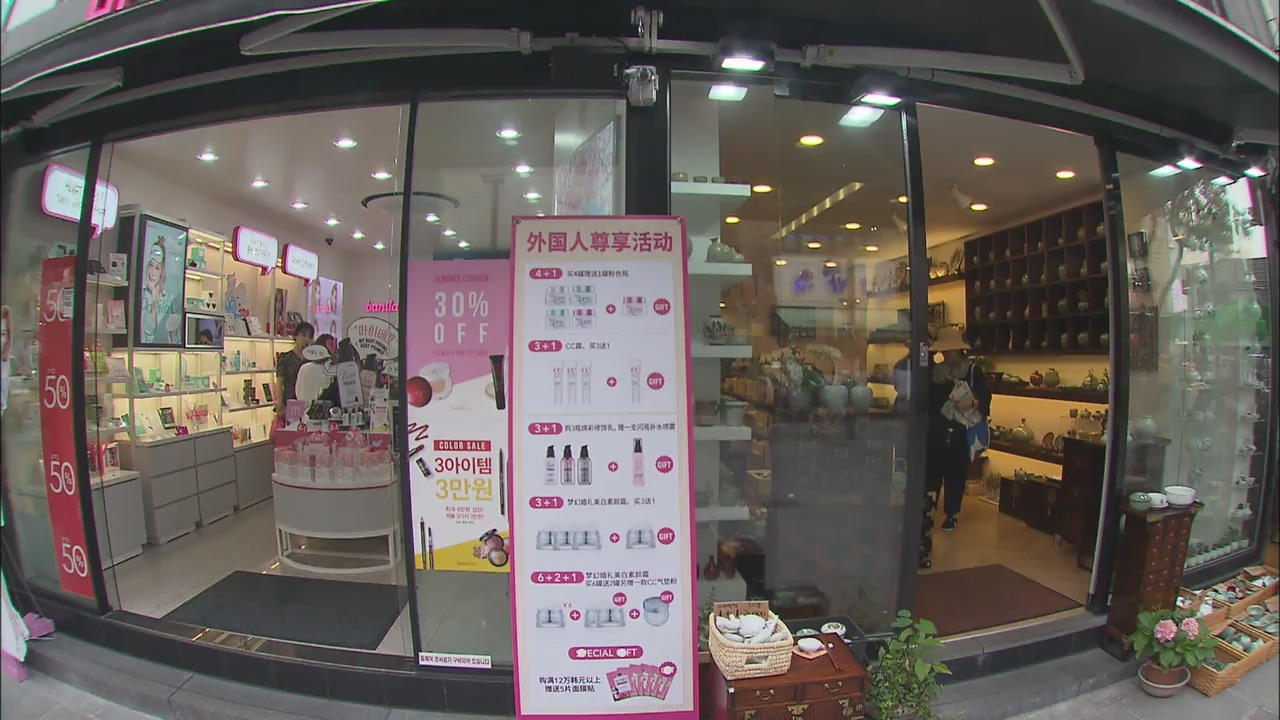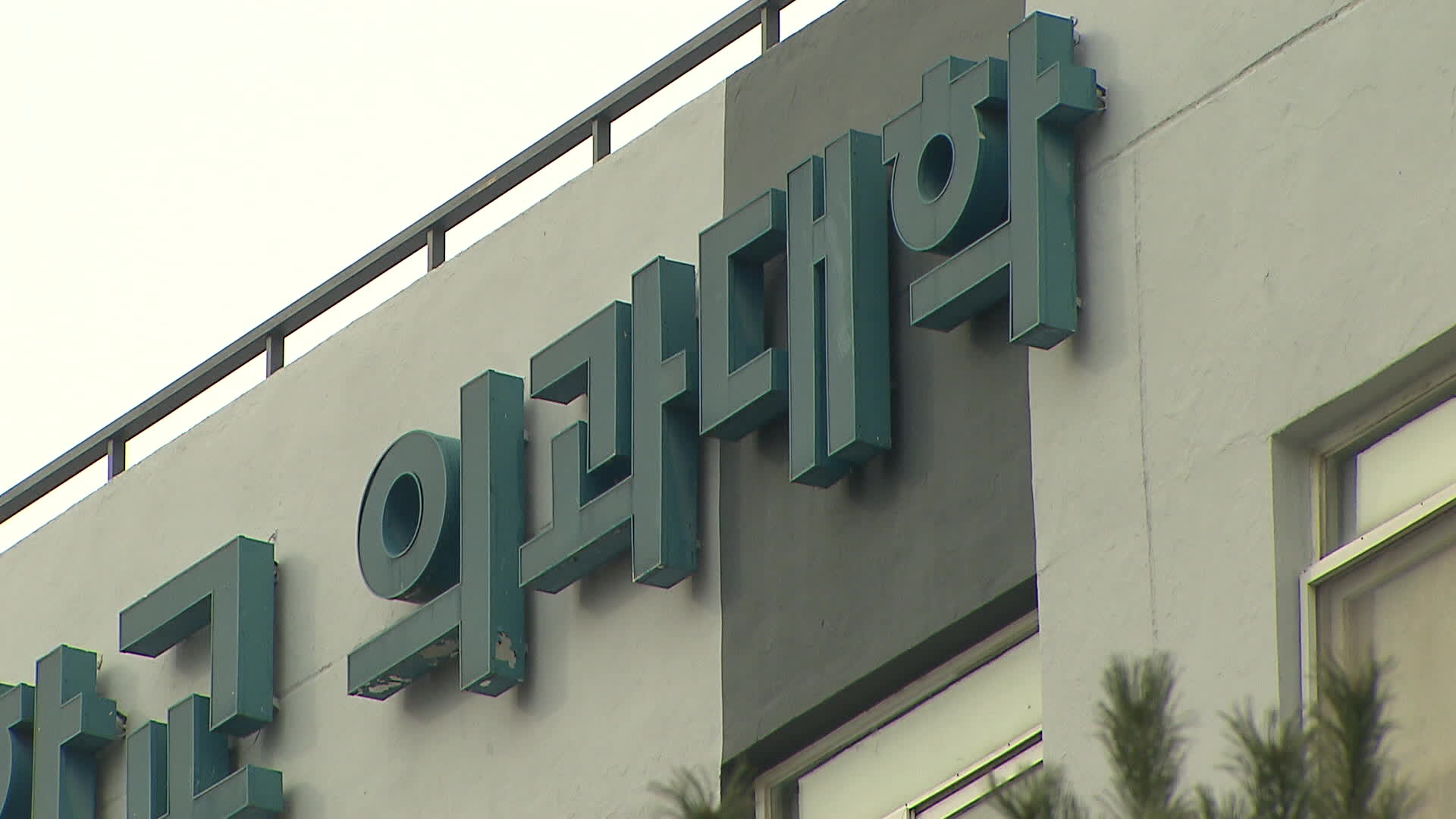Insa-dong Identity
입력 2017.07.28 (14:07)
수정 2017.07.28 (14:16)
읽어주기 기능은 크롬기반의
브라우저에서만 사용하실 수 있습니다.
[Anchor Lead]
Insa-dong in Seoul is the city's most well-known traditional neighborhood. But nowadays the area is overrun by shops that have nothing to do with Korean heritage. Many people are concerned that the streets of Insa-dong are losing their identity as a Korean culture zone.
[Pkg]
[Soundbite] "Ice cream~"
A Turkish ice cream store opened right next to a Korean traditional rice cake shop.
Doing business next to a ceramics workshop is a cosmetics chain store. There are Chinese restaurants and even Indian ones here. This is the Insa-dong neighborhood, the country's first cultural zone designated in 2002.
[Soundbite] Ji Hye-rin(Chungcheongnam-do Prov. Resident) : "I'm sad to see that Insa-dong's unique characteristics have vanished somewhat. The neighborhood has lost its distinct character."
Within the 600-meter radius of the main street, there are ten cosmetic boutiques, seven coffee shops, and even bars, totaling over 100 banned establishments. In contrast, the number of stores that sell traditional craftworks was cut nearly in half.
[Soundbite] Son Myeong-seon(Ceramic Craft Store Owner) : "There were more than 20 ceramic craft stores during my father's day. But now there are fewer than 10. Five more are going to close down next month."
The Seoul city government established an ordinance that restricts the type of establishments allowed to operate in the area, but the ordinance hasn't been effective since no penalty criteria have been arranged.
[Soundbite] Lee Seon-gyeong(Culture Policy Division, Seoul Metropolitan Gov't) : "There are no legal grounds to impose sanctions. We can't restrict the area to just one type of business."
Because of the metropolitan government's inadequate protection measures, the traditional Insa-dong neighborhood is gradually losing its identity.
Insa-dong in Seoul is the city's most well-known traditional neighborhood. But nowadays the area is overrun by shops that have nothing to do with Korean heritage. Many people are concerned that the streets of Insa-dong are losing their identity as a Korean culture zone.
[Pkg]
[Soundbite] "Ice cream~"
A Turkish ice cream store opened right next to a Korean traditional rice cake shop.
Doing business next to a ceramics workshop is a cosmetics chain store. There are Chinese restaurants and even Indian ones here. This is the Insa-dong neighborhood, the country's first cultural zone designated in 2002.
[Soundbite] Ji Hye-rin(Chungcheongnam-do Prov. Resident) : "I'm sad to see that Insa-dong's unique characteristics have vanished somewhat. The neighborhood has lost its distinct character."
Within the 600-meter radius of the main street, there are ten cosmetic boutiques, seven coffee shops, and even bars, totaling over 100 banned establishments. In contrast, the number of stores that sell traditional craftworks was cut nearly in half.
[Soundbite] Son Myeong-seon(Ceramic Craft Store Owner) : "There were more than 20 ceramic craft stores during my father's day. But now there are fewer than 10. Five more are going to close down next month."
The Seoul city government established an ordinance that restricts the type of establishments allowed to operate in the area, but the ordinance hasn't been effective since no penalty criteria have been arranged.
[Soundbite] Lee Seon-gyeong(Culture Policy Division, Seoul Metropolitan Gov't) : "There are no legal grounds to impose sanctions. We can't restrict the area to just one type of business."
Because of the metropolitan government's inadequate protection measures, the traditional Insa-dong neighborhood is gradually losing its identity.
■ 제보하기
▷ 카카오톡 : 'KBS제보' 검색, 채널 추가
▷ 전화 : 02-781-1234, 4444
▷ 이메일 : kbs1234@kbs.co.kr
▷ 유튜브, 네이버, 카카오에서도 KBS뉴스를 구독해주세요!
- Insa-dong Identity
-
- 입력 2017-07-28 14:00:40
- 수정2017-07-28 14:16:31

[Anchor Lead]
Insa-dong in Seoul is the city's most well-known traditional neighborhood. But nowadays the area is overrun by shops that have nothing to do with Korean heritage. Many people are concerned that the streets of Insa-dong are losing their identity as a Korean culture zone.
[Pkg]
[Soundbite] "Ice cream~"
A Turkish ice cream store opened right next to a Korean traditional rice cake shop.
Doing business next to a ceramics workshop is a cosmetics chain store. There are Chinese restaurants and even Indian ones here. This is the Insa-dong neighborhood, the country's first cultural zone designated in 2002.
[Soundbite] Ji Hye-rin(Chungcheongnam-do Prov. Resident) : "I'm sad to see that Insa-dong's unique characteristics have vanished somewhat. The neighborhood has lost its distinct character."
Within the 600-meter radius of the main street, there are ten cosmetic boutiques, seven coffee shops, and even bars, totaling over 100 banned establishments. In contrast, the number of stores that sell traditional craftworks was cut nearly in half.
[Soundbite] Son Myeong-seon(Ceramic Craft Store Owner) : "There were more than 20 ceramic craft stores during my father's day. But now there are fewer than 10. Five more are going to close down next month."
The Seoul city government established an ordinance that restricts the type of establishments allowed to operate in the area, but the ordinance hasn't been effective since no penalty criteria have been arranged.
[Soundbite] Lee Seon-gyeong(Culture Policy Division, Seoul Metropolitan Gov't) : "There are no legal grounds to impose sanctions. We can't restrict the area to just one type of business."
Because of the metropolitan government's inadequate protection measures, the traditional Insa-dong neighborhood is gradually losing its identity.
Insa-dong in Seoul is the city's most well-known traditional neighborhood. But nowadays the area is overrun by shops that have nothing to do with Korean heritage. Many people are concerned that the streets of Insa-dong are losing their identity as a Korean culture zone.
[Pkg]
[Soundbite] "Ice cream~"
A Turkish ice cream store opened right next to a Korean traditional rice cake shop.
Doing business next to a ceramics workshop is a cosmetics chain store. There are Chinese restaurants and even Indian ones here. This is the Insa-dong neighborhood, the country's first cultural zone designated in 2002.
[Soundbite] Ji Hye-rin(Chungcheongnam-do Prov. Resident) : "I'm sad to see that Insa-dong's unique characteristics have vanished somewhat. The neighborhood has lost its distinct character."
Within the 600-meter radius of the main street, there are ten cosmetic boutiques, seven coffee shops, and even bars, totaling over 100 banned establishments. In contrast, the number of stores that sell traditional craftworks was cut nearly in half.
[Soundbite] Son Myeong-seon(Ceramic Craft Store Owner) : "There were more than 20 ceramic craft stores during my father's day. But now there are fewer than 10. Five more are going to close down next month."
The Seoul city government established an ordinance that restricts the type of establishments allowed to operate in the area, but the ordinance hasn't been effective since no penalty criteria have been arranged.
[Soundbite] Lee Seon-gyeong(Culture Policy Division, Seoul Metropolitan Gov't) : "There are no legal grounds to impose sanctions. We can't restrict the area to just one type of business."
Because of the metropolitan government's inadequate protection measures, the traditional Insa-dong neighborhood is gradually losing its identity.
이 기사가 좋으셨다면
-
좋아요
0
-
응원해요
0
-
후속 원해요
0

















이 기사에 대한 의견을 남겨주세요.